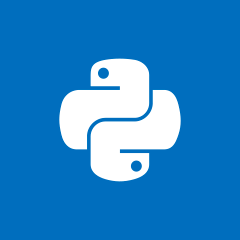使用循环分支 Apache Beam 管道
我正在尝试执行去规范化操作,我需要使用以下逻辑重新组织表:
| itemid | class | value |
+--------+-------+-------+
| 1 | A | 0.2 | | itemid | value A | value B | value C |
| 1 | B | 10.3 | ==> +--------+---------+---------+---------+
| 2 | A | 3.0 | ==> | 1 | 0.2 | 10.3 | |
| 2 | B | 0.2 | ==> | 2 | 3.0 | 0.2 | |
| 3 | A | 0.0 | | 3 | 0.0 | 1.2 | 5.4 |
| 3 | B | 1.2 |
| 3 | C | 5.4 |
我的方法是执行一个 for 循环以按 进行过滤class,前提是我知道先验类列表,然后加入生成的 pcollection。
高级代码:
CLASSES = ["A", "B", "C"]
tables = [
(
data
| "Filter by Language" >> beam.Filter(lambda elem: elem["class"]==c)
| "Add id as key" >> beam.Map(lambda elem: (elem["itemid"], elem))
)
for cin CLASSES
]
和加入:
_ = (
tables
| "Flatten" >> beam.Flatten()
| "Join Collections" >> beam.GroupByKey()
| "Remove key" >> beam.MapTuple(lambda _, val: val)
| "Merge dicts" >> beam.ParDo(mergeDicts())
| "Write to GCS" >> beam.io.WriteToText(output_file)
)
与(根据 Peter Kim 的建议进行编辑):
class mergeDicts(beam.DoFn):
process(self, elements):
result = {}
for dictionary in elements:
if len(dictionary)>0:
result["itemid"] = dictionary["itemid"]
result["value {}".format(dictionary["class"])] = dictionary["value"]
yield result
我这里的问题是,当管道在 Apache Beam 计算引擎中执行时,我获得了由列表的最后一个元素过滤的相同 pcollections,在本例中是 C。
[已添加] 看起来 Apache Beam 引擎采用最终状态的迭代变量,这意味着迭代列表的最后一个元素,用于所有调用的分支。
我显然采用了错误的方法,但是哪种方法应该是执行此操作的最佳方法?
 喵喔喔
喵喔喔3回答
-

Qyouu
您遇到的是关于闭包、循环和 Python 作用域的令人惊讶的问题。您可以通过分配变量而不是将其从闭包中拉出来解决这个问题。例如tables = [ ( data # Pass it as a side input to Filter. | "Filter by Language" >> beam.Filter(lambda elem, cls: elem["class"], c) | "Add id as key" >> beam.Map(lambda elem: (elem["itemid"], elem)) ) for c in CLASSES]或者tables = [ ( data # Explicitly capture it as a default value in the lambda. | "Filter by Language" >> beam.Filter(lambda elem, cls=c: elem["class"]) | "Add id as key" >> beam.Map(lambda elem: (elem["itemid"], elem)) ) for c in CLASSES]分区在这里也很有效,既可以避免这个陷阱,也可以表达你的意图。 -

宝慕林4294392
根据您显示的结果表,我假设您希望输出如下所示:{'itemid': '1', 'value B': 10.3, 'value A': 0.2}{'itemid': '2', 'value B': 0.2, 'value A': 3.0}{'itemid': '3', 'value B': 1.2, 'value A': 0.0, 'value C': 5.4}您的 mergeDicts 正在覆盖值,因为字典每个键只能保存一个值。将 mergeDicts 更新为类似这样的内容以指定键:class mergeDicts(beam.DoFn): process(self, elements): result = {} for dictionary in elements: if len(dictionary)>0: result["itemid"] = dictionary["itemid"] result["value {}".format(dictionary["class"])] = dictionary["value"] yield result -

函数式编程
我在这里发布一个我自己找到的解决方案,但我没有检查它是否为正确答案,因为我想更好地理解 Beam 引擎的执行逻辑。为了根据条件获得单独的 pcollection,我没有使用循环中的项目过滤表,而是使用了类beam.Partition。通过直接应用文档中的代码示例,我将 pcollection 分成多个表,准备加入。这样就避免了这个问题,但是我不清楚为什么 for 循环不能像我预期的那样工作。
 随时随地看视频慕课网APP
随时随地看视频慕课网APP
相关分类



 Python
Python